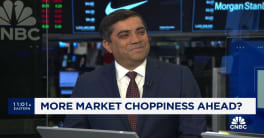Spring market buyers got down to business in March and existing home sales rebounded, up 5.1 percent but didn't quite recover from a disappointing February. The National Association of Realtors® NAR said sales during the month were at a seasonally adjusted annual rate of 5.33 million with sales especially strong in the Northeast and Midwest but first-time buyers were still missing from the equation.
Compared to March 2015 existing home sales were up a modest 1.5 percent. February sales numbers, which had surprised many by retreating by 7.1 percent from January's, were downgraded further today, from 5.08 to 5.07 million.
Existing home sales are completed transactions that include single-family homes, townhomes, condominiums and co-ops. Single-family home sales were up 5.5 percent from February (only partially offsetting February's 7.2 percent drop to 4.51 million) to a seasonally adjusted annual rate of 4.76 million units and are now 2.6 percent ahead of sales in March 2015.
Existing condominium and co-op sales rose 1.8 percent to a seasonally adjusted annual rate of 570,000 units in March from 560,000 in February. Those sales are running 6.6 percent below the March 2015 pace of 610,000 units.
NAR chief economist Lawrence Yun, says home sales had a nice rebound in March following February's uncharacteristically large decline. "Closings came back in force last month as a greater number of buyers - mostly in the Northeast and Midwest - overcame depressed inventory levels and steady price growth to close on a home," he said. "Buyer demand remains sturdy in most areas this spring and the mid-priced market is doing quite well. However, sales are softer both at the very low and very high ends of the market because of supply limitations and affordability pressures."
Median prices across all existing home types were up by 5.7 percent from the previous March to $222,700, marking the 49th consecutive month of annual gains. The March 2015 median price was $210,700. The median existing single-family home price gained 5.8 percent to $224,300 and condo prices rose to a $209,600 median, 4.6 percent above a year ago.
The number of available homes increased by 5.9 percent over the month but inventories remain 1.5 percent lower than last year at the same time. The 1.98 million existing homes for sale at the end of March represent a 4.5-month supply at the current rate of sales.
"The choppiness in sales activity so far this year is directly related to the unevenness in the rate of new listings coming onto the market to replace what is, for the most part, being sold rather quickly," adds Yun. "Additionally, a segment of would-be buyers at the upper end of the market appear to have been spooked by January's stock market correction."
Properties sold rapidly in March - a typical marketing period of 47 days compared to 59 days in February and 52 days in March 2015. Short sales were on the market the longest at a median of 120 days in March, while foreclosures sold in 50 days and non-distressed homes took 46 days. Forty-two percent of homes sold in March were on the market for less than a month - the highest since July 2015 (43 percent).
The share of first-time buyers was 30 percent in March, unchanged both from February and a year ago and matching the average share for all of 2015. The investor share of sales was 14 percent compared to 18 percent in February but identical to the share a year earlier. Sixty-six percent of investors paid cash in March and cash sales were 25 percent of all transactions during the month.
"With rents steadily rising and average fixed rates well below 4 percent, qualified first-time buyers should be more active participants than what they are right now," adds Yun. "Unfortunately, the same underlying deterrents impacting their ability to buy haven't subsided so far in 2016. Affordability and the low availability of starter homes is still a major barrier for them in most markets."
Distressed sales continued to decline; foreclosures represented 7 percent of sales and 1 percent were short sales, down from a distressed property share of 10 percent in both February and March 2015. Foreclosures sold for an average discount of 16 percent below market value in March (17 percent in February), while short sales were discounted 10 percent (16 percent in February).
NAR President Tom Salomone says despite modest improvements, mortgage credit is still difficult to come by for many first-time buyers and middle-income households. "Reducing the Federal Housing Administration's annual mortgage insurance premium rate and repealing its life-of-loan policy requirement would certainly expand options for more of these buyers," he said. "These changes would save consumers money and further strengthen the FHA's program by enticing more creditworthy borrowers to seek out FHA-insured loans."
Sales of existing homes were up in all four regions. In the Northeast they increased by 11.1 percent to an annual rate of 700,000, and are now 7.7 percent above a year ago. The median price in the Northeast was $254,100, a 5.8 percent annual gain.
The Midwest saw a 9.8 percent jump which brought the annual rate to 1.23 million, 0.8 percent higher than in March 2015. The median price in the Midwest was $174,800, up 7.0 percent from a year ago.
Gains were more modest in the other two regions, up 2.7 percent in the South and 1.8 percent in the West. Sales in the South were at an annual rate of 2.25 million, 2.3 percent higher than last March while sales in the West were at a 1.15 million pace, down 2.5 percent from the year before. The median price in the South grew 4.6 percent to $194,400 and in the West the median price was $320,800 a 5.9 percent annual appreciation.







